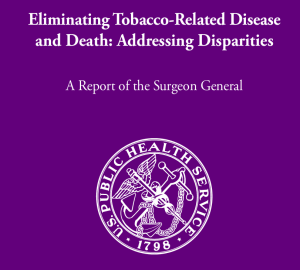- Matthew J. Carpenter
- Amy E. Wahlquist
- Jennifer Dahne
- Kevin M. Gray
- K. Michael Cummings
- Graham Warren
- et al.
Background
As summarised in the most recent Cochrane review, the few clinical trials on e-cigarettes are largely focused on smoking cessation. We aimed to determine the naturalistic uptake, use, and impact of e-cigarettes among adults who may or may not want to stop smoking.
Methods
In this naturalistic, randomised, controlled clinical trial, adult smokers, across the motivational spectrum and with minimal history of e-cigarette use, were recruited online from the general community within 11 cities across the USA. Participants were randomly assigned (2:1) to either receive either a free 4-week supply of flavoured, tank-style e-cigarette, or not. E-cigarette group participants received a battery and device with up to 30 pre-filled tanks, offered among five flavours, with minimal instructions on use. The study’s primary purpose was to descriptively assess naturalistic uptake and usage of the e-cigarette, and to secondarily assess its impact on smoking behavior. The latter, assessed through six months of follow-up, included: a) self-reported 7-day point prevalence abstinence, b) incidence of quit attempts, and c) smoking reduction. This trial is registered at ClinicalTrials.gov, NCT03453385.
Findings
Between 5/2018 and 3/2022, 638 adult smokers were enrolled and randomly assigned (427 in the e-cigarette group and 211 in the no-product control group). Uptake of e-cigarettes was robust: approximately 70% of participants used the product, with average usage exceeding 4 days per week during the initial 30 days. Based on an intent-to-treat approach where missing data is imputed as smoking, almost all behavioral outcomes favored the e-cigarette group relative to no-product control, including point prevalence abstinence at six months (Odds Ratio [OR] = 1.8; 95% Confidence Interval [CI] = 1.0–3.1), cumulative incidence of 24-hr quit attempts (OR = 1.5; 95% CI = 1.0–2.2), and having reduced smoking by at least 50% since baseline (OR = 1.8; 95% CI = 1.2–2.7). Results were similar under an alternative imputation.
Interpretation
Complementing cessation-focused trials, results suggest that unguided e-cigarette use also leads to smoking cessation, allaying the notion that causal effects of e-cigarettes on cessation are not reflective of real-world scenario of self-determined use. For smokers who may not be able to quit using existing pharmacologic approaches, e-cigarettes may be considered to achive that purpose.
Funding
National Cancer Institute.
Few in number and primarily come from outside the United States. Randomized trials are challenging to conduct within the U.S. given the regulatory environment that makes it difficult to assess (or claim) a therapeutic purpose for e-cigarettes, as would be the case for any study that is designed explicitly for this intent. In fact the vast majority of existing trials have involved adult smokers who expressed an interest in quitting and who were given instructions and support to do so (e.g., setting quit date, offering adjunctive cessation support). Some have suggested that the structured provision of e-cigarettes as a therapeutic intervention for smoking cessation, as demonstrated through these prior trials, does not translate to real world use; indeed a number of observational studies have not shown similar effects.
However, as non-randomized studies, observational cohort studies suffer from selection bias that often confounds interpretation.
Lacking in the literature are large-scale clinical trials that are both randomized (removing selection bias as to who does and does not use e-cigarettes) and naturalistic (allowing smokers to do as they wish). Randomized naturalistic studies are more inclusive of a broad range of smokers, including those who may not want to quit. They also provide minimal instruction and/or requirement to use e-cigarettes. Such trials are perhaps more reflective of real-world scenarios, where motivation to quit is not required and user decision guides use. As such, randomized naturalistic studies allow for analyses of self-determined product uptake/use and causal effects on smoking cessation, if any. In combination with cessation-focused RCTs above, such trials have the potential to provide guidance to inform regulatory policies regarding e-cigarettes.
To date, only one such randomized, naturalistic trial exists.
Our group conducted an initial pilot trial of early-generation e-cigarettes, focusing on product uptake and effects on cessation. Results from the trial suggested that cigarette smokers are willing to use e-cigarettes, with numerically if not statistically significant trends toward reduced cigarette smoking and positive changes in cessation-related behaviors.
The current study is the first large-scale trial to assess the uptake and impact of e-cigarettes when provided beyond a treatment context and without explicit instructions to switch. To our knowledge, it is the largest e-cigarette trial yet conducted within the US.
Methods
Study design
The trial recruited adult smokers in 11 cities across the US and randomized them to receive a free 4- week supply of e-cigarettes (n = 427) or not (n = 211). No additional product was offered beyond one month, though e-cigarette use was measured throughout follow-up, which occurred via phone surveys occurred at Weeks 1, 2, 3, 4, 8, 12 and 24. E-cigarette devices and tanks were purchased directly from NJoy with grant funds. All study procedures were approved by the Medical University of South Carolina (MUSC) Institutional Review Board (IRB) and was registered at ClinicalTrials.gov (NCT03453385). Findings below are presented in concordance with CONSORT reporting guidelines.
Participants
Eligibility criteria included: a) age 21+ (abiding by tobacco sales requirements), b) current smoker of ≥5 cigarettes per day for ≥1 year, c) no known recent history of cardiovascular distress, d) neither pregnant nor breastfeeding, and e) no current use of smoking cessation medication. Inclusion was further restricted to participants with minimal history of e-cigarette use, defined as not having purchased e-cigarettes in the prior six months, nor having ever used a tank system weekly, nor having used any e-cigarette of any kind in the preceding six months. Participants were recruited through online methods (e.g., Craigslist), which provided a direct link to an secure online platform (e.g., REDCap) for initial screening. Upon initial eligibility, individuals provided their contact information and were subsequently consented through one of two channels, available upon preference. The first option allowed for mailed consents (postage-paid return reply); the second was via synchronous teleconsent; both provided opportunity to discuss study details and ask any questions with study staff prior to consent. Upon receipt of the mailed consent packet or completion of teleconsent, participants were scheduled for a baseline (Week 0) intake call, during which they were randomized to assigned group. As a remote trial, the unique details of screening and consent are provided elsewhere.
Among the 11 cities selected for participant recruitment, the local Charleston SC metro area was included, with the intent to recruit a sub-sample of participants (n = 120) who could come into the research lab to provide biochemical verification of smoking behavior. However, the COVID-19 pandemic significantly compromised these plans. University shut-downs and delayed re-opening disallowed many in-person study visits, and collection of biomarkers was not feasible as intended. Thus, while the trial included a local sub-sample, there was insufficient data to report on biomarker outcomes (57 biospecimen samples at Week 4, and 39 at Week 24, across both groups).
Randomization
Randomization occurred via stratified, mixed block design, stratifying on local vs. national enrollment and on desire to quit smoking: 0–6 vs. 7–10 on a VAS scale. Randomization was 2:1 (e-cigarette:control) to increase the precision of parameter estimates around e-cigarette product uptake. The randomization allocation was created by the study statistician and uploaded into REDCap so that the research staff team was blinded to the sequence and could randomize individuals as they were eligible for participation. Randomization did not include any masking.
Procedures
The general aim within the e-cigarette group was to approximate the real-world scenario in which smokers are exposed to e-cigarette products and self-decide if and how to use them. The guiding intent was to use the most efficient, non-modifiable product on the market at the time of study initiation, with the goal of optimizing user satisfaction and avoiding the possibility of tank adulteration [spilling, adding more]. NJoy’s pre-filled tank and battery was selected for this purpose, coinciding with the FDA decision to use it as a prototype for a Standardized Research E-Cigarette (SREC) for research purposes. The NJoy device was a closed tank system, sufficiently powered (1000 mAh) with 3 ml pre-filled nicotine (15 mg/ml). Participants could choose up to 2 flavors among 5 offered: tobacco, menthol, blue/blackberry (one flavor), apple melon, or iced fruit, and could change selection at 2nd shipment.
The product was provided in two ∼2-week shipments: 30 tanks total, under the rationale that one month would allow for an adequate acclimation period in which participants could determine if and how they would use it. In rare instances where shipments were not received (n = 14; 3%), additional product was sent in deviation from the protocol. Adjunctive messaging, provided via phone at baseline call and within mailing of product, gave cursory background and suggestions on how it could be used but emphasized that choice on if or how to use e-cigarettes was completely up to the participant. Full messaging is provided within Supplemental Materials, but specific excerpts include:
- We will provide an e-cigarette device for you to use over the next four weeks. We’ll send you everything you need via mail, and you’ll receive it in a few days. … The most important thing to tell you now is that you can use these e-cigarettes however you like, as much or as little as you like. You can reduce your smoking, quit smoking entirely, or just use e-cigarettes in places where you cannot smoke … You are not required to use the e-cigarettes, but you might want to give them a try.
Participants were also told that e-cigarettes were ‘likely safer’ than combustible cigarettes (the most conservative, IRB-approved messaging at the time of study onset), and, in response to e-cigarette or vaping use-associated lung injury (EVALI) which arose as a concern midway through the study, brief caution was expressed. While provision of free product is not naturalistic, the trial’s design allowed for the assessment of naturalistic outcomes of product use when cost is not a barrier.
Participants in the no-product control group did not receive any product but were compensated nominally more for study participation than the e-cigarette group ($320 vs. $240) to offset concerns about attrition. Note that a placebo comparison is specifically not warranted in a naturalistic product use design. A study of e-cigarette provision, inclusive of any expectancy effects, is properly controlled via no provision of product.
Outcomes
The study’s primary purpose was to assess naturalistic uptake and usage of the e-cigarette. Thus, descriptive information is provided in regard to: a) any use and b) number of days of use and c) puffing episodes on days of use, each assessed weekly for the first month and then episodically thereafter. Puffing episodes were guided by precedent from other studies, and explained to participants as “the number of times per day that you use the e-cigarette (one time consists of about 15 puffs or 10 min of use).” While these uptake outcomes pertain primarily to the e-cigarette group, control participants could also use e-cigarettes, on their own accord, and thus, these outcomes are reported as well.
While not a cessation-driven trial, the study was powered on these outcomes under the rationale that: a) cessation might naturally occur, b) it would be missed opportunity to be under-powered to detect any between-group differences, and c) readers would be interested in these study outcomes in comparison to other trials. Thus, while cessation was not the primary objective, it did serve as the outcome on which the study was powered (see below). Additional measures of cessation included: a) 7-day abstinence at each weekly visit, b) ‘floating abstinence;’ i.e., having ever achieved 7-days of non-smoking, throughout follow-up.
Sample size determination
Per above, sample size estimations were based on cigarette cessation: 7-day point prevalence abstinence at 6-month follow-up. Base rates came from prior nationwide trials of similar design conducted by our group, in which 6-month abstinence rates within the control group ranged 4–13%.
Other estimates suggest ∼5% for population-based quitting.
Ultimately, a base rate of 8% was chosen. Anticipated quit rates in the e-cigarette group were derived from the most relevant study published at the time of study design: an uncontrolled observational cohort (i.e., naturalistic) study of smokers given e-cigarettes for up to 6 months, in which 23% (intent-to-treat; ITT) and 33–39% (respondent only analyses) were quit at 6 months. Since the current trial provided e-cigarettes for 1 month only, a lower quit rate was anticipated. The trial was thus powered to detect a difference in rates of abstinence of 8% vs. 16% (RR = 2.0), requiring 600 participants (400 e-cigarette vs. 200 control). Inflating by 10% to account for potential attrition, the final anticipated sample size was estimated at 660 participants. The final actual sample size was 638 (97% of the target); unavailability of product supply in the final months of recruitment precluded additional enrollment.
Statistical analysis
Measures of uptake are largely descriptive, focusing primarily on the e-cigarette group. Binary cessation outcomes were analyzed two ways: (1) coding missing data as returned to smoking (labeled as Missing = Smoking; M = S) as per suggested practice and (2) utilizing generalized linear mixed models (GLMMs) with binary distribution, logit links, and random residual options to allow time points with missing data to be informed by prior collected data. No imputations were made for continuous outcomes. For M = S analyses, logistic regression models were used for each of the cessation outcomes noted above, with the main effect of intervention group included. Odds ratios (ORs) and 95% confidence intervals (95% CIs) were determined from the models for (1) point prevalence abstinence at weekly follow-up, (2) floating abstinence, (3) cumulative incidence of 24 hr QA’s and (4) achieving 50% reduction in CPD. The GLMMs were created similarly with main effects for intervention group, time, and an interaction between time and group. Estimate statements from the models were used to determine group differences at each time point of interest and reported as ORs and 95% CIs. Note that both M = S and GLMM outcomes are shown in Table 2, but the text within Results reports M = S outcomes (outcome percents, ORs, 95% CIs) only. Per the original protocol (Supplemental Materials), covariates were not included in models unless baseline differences suggested need for otherwise.
General linear models (GLMs) were used to measure the relationships between group and time for continuous outcomes of interest such as CPD, MTQ, CTQ, and dependence. Interactions between time and group were initially included in models and were removed if not significant at an α = .1 level of significance, leaving the main effects of time and group.
Patterns of use and dual use over time are also largely descriptive, and in cases of missing data, the last observation was carried forward.
As noted above, the current trial stands in contrast with many existing RCTs, in that study recruitment was open to smokers across the motivational spectrum, without requirement to quit. Accordingly, many of the above outcomes were separately assessed among smokers high (7–10 on 10-pt scale) and low in motivation to quit (0–6), to determine if the effects were restricted to merely the former. Notably, the trial was not powered on these post-hoc sub-group differences; the intent herein is to compare effect sizes only.
Role of the funding source
The funder of the study had no role in study design, data collection, data analysis, data interpretation, or writing of the report. Authors MJC, AEW, and TTS had full access to the data throughout the study. All authors contributed to methods and manuscript editing. MJC had final responsibility for decisions on publication.
Results
Recruitment flow, initiated 5/2018 and ending 3/2022, is shown in Fig. 1, and sample characteristics are shown in Table 1. For all follow-up timepoints, retention favored the no-product control group (P < .05 for each). The sample had broad demographic diversity: 31% non-White, 14% Hispanic or Latino, and heterogeneity across educational, employment, and income strata. By design, individuals were represented across the motivational spectrum of wanting to quit. There were no group differences at baseline. Thus, as per protocol, no covariates were included in subsequent analyses.
Read more : Full Text










